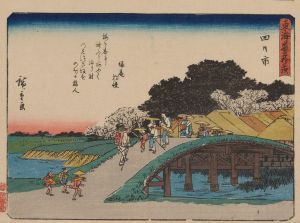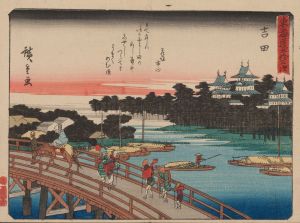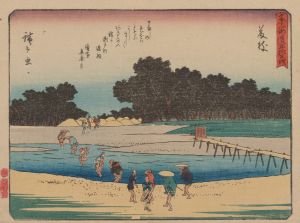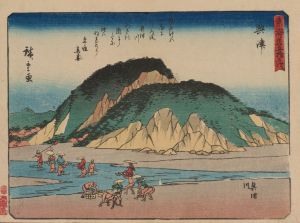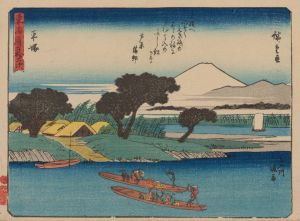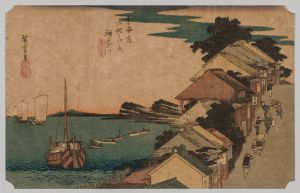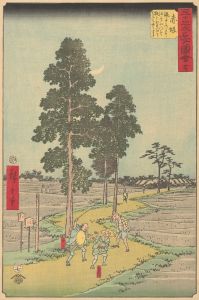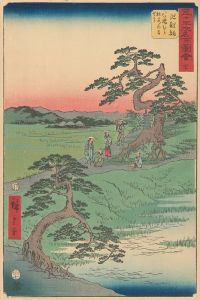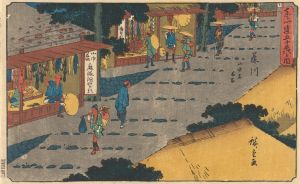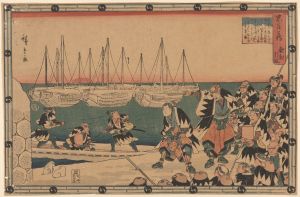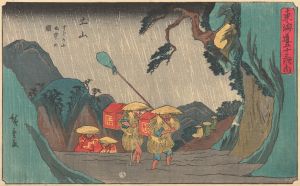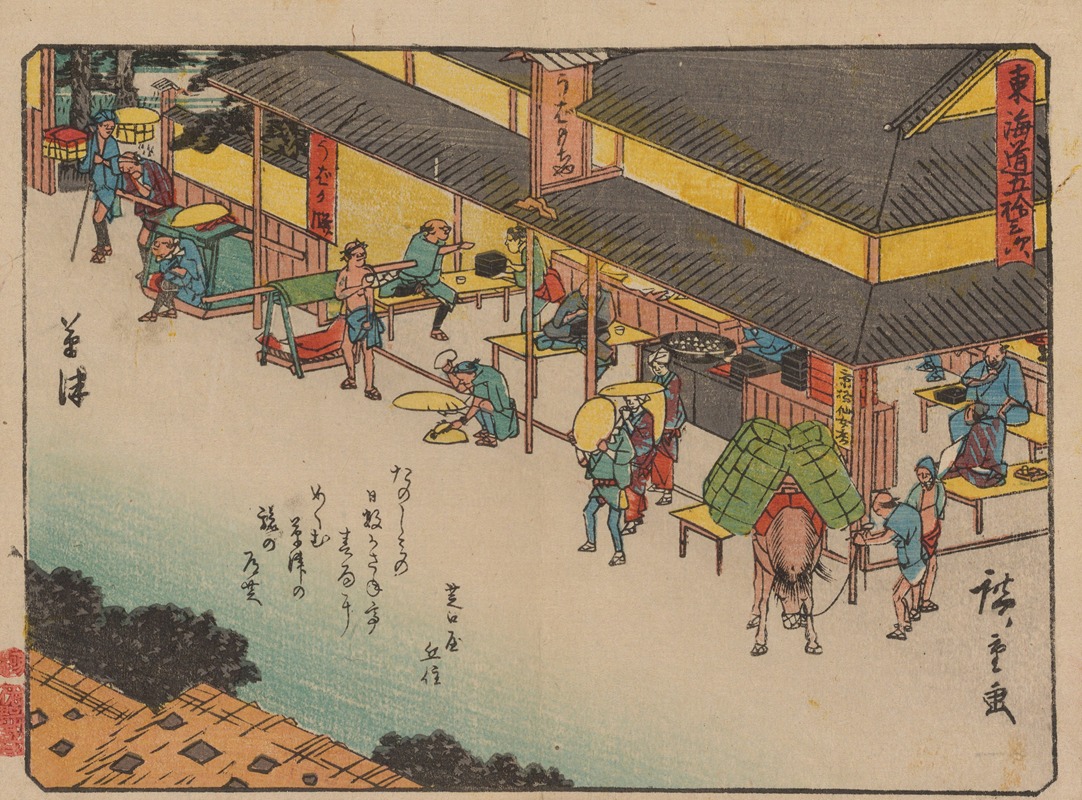
Tokaido gojusantsugi, Pl.53
A hand-painted replica of Andō Hiroshige’s masterpiece Tokaido gojusantsugi, Pl.53, meticulously crafted by professional artists to capture the true essence of the original. Each piece is created with museum-quality canvas and rare mineral pigments, carefully painted by experienced artists with delicate brushstrokes and rich, layered colors to perfectly recreate the texture of the original artwork. Unlike machine-printed reproductions, this hand-painted version brings the painting to life, infused with the artist’s emotions and skill in every stroke. Whether for personal collection or home decoration, it instantly elevates the artistic atmosphere of any space.
Andō Hiroshige, a prominent Japanese ukiyo-e artist of the Edo period, is renowned for his landscape prints and depictions of the Tōkaidō, the road connecting Edo (modern-day Tokyo) to Kyoto. One of his most celebrated series is "The Fifty-three Stations of the Tōkaidō" (Tōkaidō Gojūsan-tsugi), which consists of 55 woodblock prints, including the starting point at Nihonbashi in Edo and the endpoint in Kyoto, along with the 53 stations in between.
The print "Tokaido gojusantsugi, Pl.53" is part of this series and is often referred to by its specific station name, Ōtsu, which is the last station before reaching Kyoto. Hiroshige's Tōkaidō series was published following his journey along the Tōkaidō road in 1832, which he undertook as part of an official delegation transporting horses to the imperial court. This journey provided Hiroshige with the inspiration and firsthand experience necessary to create his detailed and evocative prints.
Hiroshige's work is characterized by its use of vibrant colors, dynamic compositions, and a keen attention to the atmospheric conditions of the landscapes he depicted. His prints often capture the daily life and activities of travelers and locals, providing a vivid portrayal of 19th-century Japan. The Tōkaidō series, in particular, was instrumental in popularizing the genre of landscape prints in Japan and influenced many Western artists, including the Impressionists.
In "Tokaido gojusantsugi, Pl.53," Hiroshige captures the essence of the Ōtsu station, which was historically significant as a bustling post town and a gateway to Kyoto. The print typically features travelers and local inhabitants going about their daily routines, set against the backdrop of the natural and architectural beauty of the area. The composition often includes elements such as mountains, bodies of water, and traditional Japanese buildings, all rendered with Hiroshige's characteristic attention to detail and color.
Hiroshige's Tōkaidō series was published by the firm Hoeido, and it became immensely popular, contributing to the artist's fame and the widespread appreciation of ukiyo-e prints. The series not only served as a travelogue for those who could not journey along the Tōkaidō themselves but also as a work of art that celebrated the beauty and diversity of Japan's landscapes.
The influence of Hiroshige's work extended beyond Japan, as his prints were collected by Western artists and art enthusiasts in the late 19th and early 20th centuries. His innovative use of perspective and composition, as well as his ability to capture the transient beauty of nature, resonated with artists such as Vincent van Gogh and Claude Monet, who admired and were inspired by the Japanese aesthetic.
Overall, "Tokaido gojusantsugi, Pl.53" is a testament to Hiroshige's skill as an artist and his ability to convey the spirit of a place through his art. His work remains an important part of the cultural heritage of Japan and continues to be celebrated for its artistic and historical significance.





